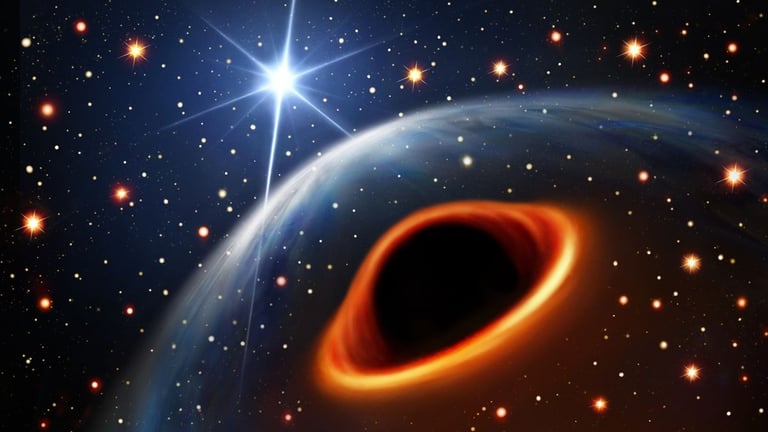Closest Intermediate-Mass Black Hole to Earth Discovered in Milky Way
July 30, 2024
A rare intermediate-mass black hole has been discovered at the center of our galaxy, located near the supermassive black hole Sagittarius A*.
This candidate black hole could be the closest known black hole to Earth, situated just under 17,000 light-years away, which is closer than the supermassive black hole in our galaxy.
The mass of the candidate black hole is estimated to be at least 8,200 times that of the Sun, placing it firmly within the intermediate range of black holes.
Intermediate-mass black holes are elusive and are theorized to range from 100 to 100,000 times the mass of the Sun, making this discovery particularly significant.
The discovery was detailed in a study published in The Astrophysical Journal, with lead author Florian Peissker from the University of Cologne, Germany.
Dr. Nadine Neumayer from the Max Planck Institute highlighted the importance of this finding, noting that few black holes of similar mass are known.
This black hole candidate may serve as a 'missing link' in our understanding of black hole evolution, a critical area of research in astronomy.
Understanding black hole evolution, including their formation and life cycles, remains a key focus for astronomers.
An international team utilized the Hubble Space Telescope over 20 years to analyze 500 images of seven fast-moving stars in the globular cluster Omega Centauri, located 17,000 light-years from Earth.
Maximilian Häberle, a PhD student, noted that the high speeds of these stars suggest they should escape the cluster, indicating a massive object, likely a black hole, is keeping them in orbit.
The star cluster IRS 13, located near Sagittarius A*, was found to have hot, massive stars moving in an orderly pattern, further indicating the presence of the black hole.
Astronomers detected X-rays from a ring of ionized gas in the center of IRS 13, suggesting the presence of this intermediate black hole with a mass around 30,000 times that of the Sun.
Black holes are challenging to observe directly; they can only be detected when consuming surrounding objects, often stars, which complicates the study of their evolution.
Follow-up observations with advanced telescopes like the James Webb Space Telescope and the Extremely Large Telescope aim to provide more insights into the behavior of the star cluster and the operation of black holes.
Summary based on 2 sources
Get a daily email with more Science stories
Sources

Live Science • Jul 25, 2024
Ultra-rare black hole found hiding in the center of the Milky Way
Universe Today • Jul 30, 2024
Finally! Astronomers Find the Missing Link Between Stellar and Supermassive Black Holes